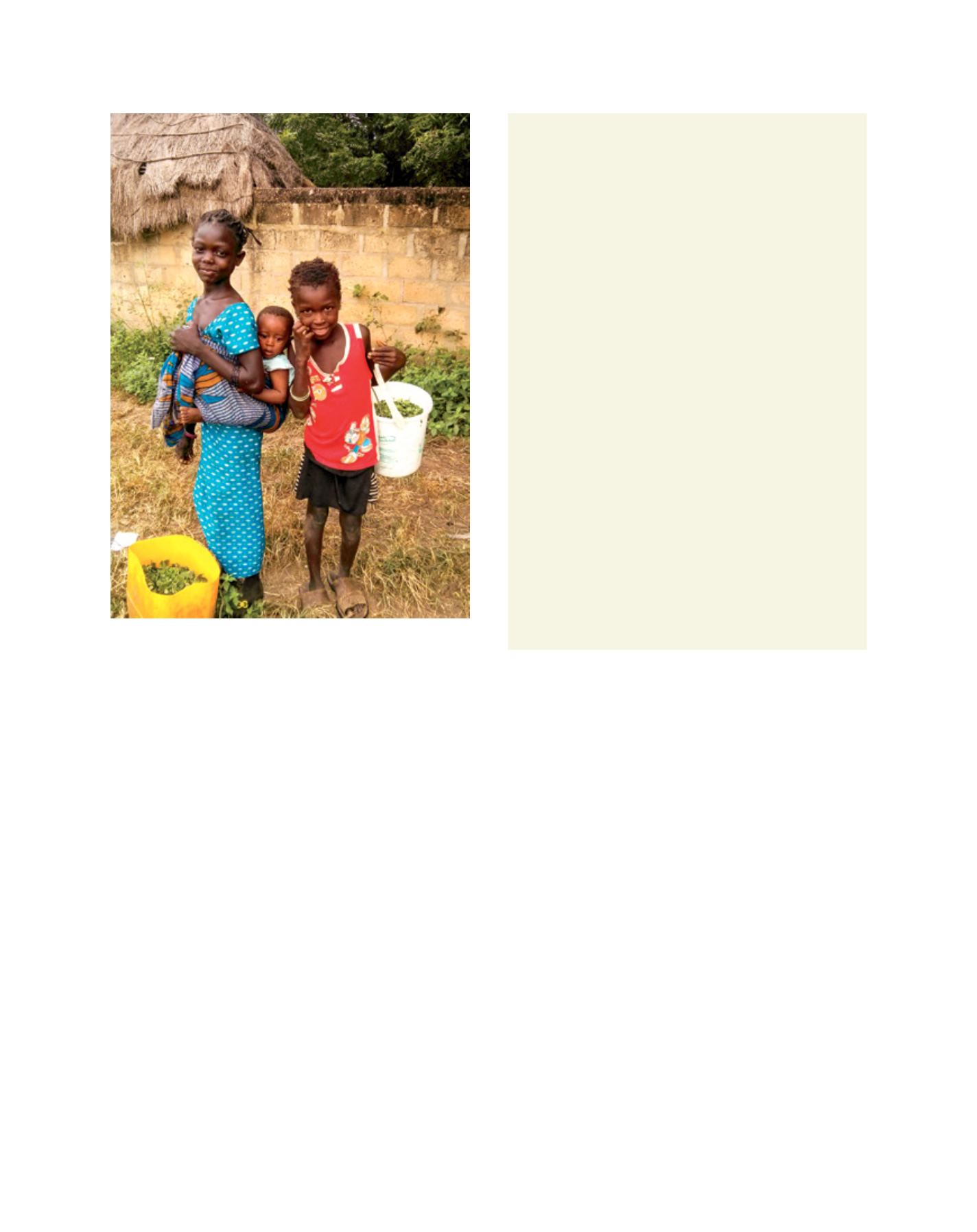

[
] 145
tens of square metres to a few thousand square metres. The
most common size is 500 square metres. Since the minimal
pressure needed for operation of the drip system is only one
metre, TIPA can use low-energy water sources such as surplus
water from village water towers (most common in Senegal),
solar energy and artesian energy.
The technical requirements to establish a TIPA project of
100 units (100 farmers) are:
• an area of 5 hectares divided into 100 plots of 500 square
metres each (20 x 25 metres) – one 500 square metre
plot per farmer
• a sustainable water resource for the daily supply of up to
400 cubic metres of water to the project, with pressure
not lower than 3.5 metres (0.35 Atmosphere)
• basic water infrastructure for distribution of the water to
the plots: each plot with access to a water tap
• protection/fencing of the area allocated for the project
• a building to provide necessary storage space, packing
space, sanitation services and other elementary needs of
the project.
The estimated cost for installation is around US$1.5 per square
metre. The estimated profit is about US$2.0 per square metre
per year, with an investment return period of six months.
Developed at Ben Gurion University of the Negev in coop-
eration with world-renowned Israeli irrigation companies,
the TIPA model was later enhanced by MASHAV in coopera-
tion with the International Crops Research Institute for the
Semi-Arid Tropics. It was first started in Senegal in 2006,
as an initiative of the Embassy of Israel in Dakar and of
MASHAV. Together with the collaboration of the Senegalese
Water Services and two local partners, three communities
and locations were chosen for the establishment of the first
TIPA projects in Senegal. The results were impressive: 60
families, most of them headed by women, tripled their agri-
cultural income in less than two years. A new source of
income was created.
Following the success of the model, the Senegalese
Government decided to expand the TIPA project, adopting
it as a national programme to be implemented throughout
the country. Within this framework, the trilateral partner-
ship established between the governments of Israel, Italy and
Senegal addresses the issue of food security and enhancing
income generation, including the installation and operation
of about 500 hectares of TIPA which will directly benefit a
population of over 10,000 people in rural Senegal.
By placing people at the heart of development, the TIPA project
identifies efficient ways to help family farmers to fulfil their
potential and contributes to human development by enhanc-
ing and expanding human capabilities to achieve sustainable
development, poverty alleviation, provision of food security, the
empowerment of women and community development.
The family drip irrigation system
A reservoir and an irrigation kit are combined to make up the basic
irrigation system. The reservoir capacity is determined by the size
of the field to be irrigated, and the long-term evapotranspiration
averages in the region.
Irrigation kit
The irrigation kit uses the pressure of gravity from a height of
one metre and above to distribute water evenly throughout a
field allowing:
• maintenance of low soil moisture tension
and ample soil aeration
• reduced leaching of fertilizers compared
with pressurized systems
• water application based on crop evapotranspiration
• application of nutrients based on crop demand.
The basic low-pressure drip irrigation kit is composed of taps, a
filter, the main distribution line and 500-1,000 metres of laterals
(in which the drippers are embedded).
Operating system
Irrigation water is applied every day. It takes three to four hours to
complete an irrigation cycle. The continuous maintenance of low
soil moisture tension (due to the lengthy irrigation period) results,
particularly in sandy soils, in higher growth rates and hence in
higher yields. Under low-pressure discharge, water moves mainly
horizontally resulting in very little vertical leaching of nutrients. This
special characteristic eliminates the need to apply soluble fertilizers
– which are not always available – in the water with every
irrigation event (as practiced in conventional drip systems).
Maintenance of the system is confined to daily cleaning of the
filter prior to irrigation, and periodical flushing of the reservoir
and laterals. The rigid drip systems developed and manufactured
by Israeli companies can last for more than 10 years with little or
no maintenance.
Producing irrigated high-value crops can enable small-scale family farm units
to achieve better results
Image: MASHAV
D
eep
R
oots
















